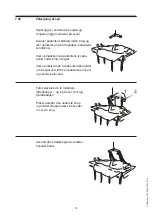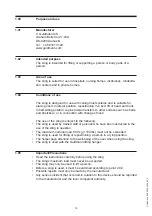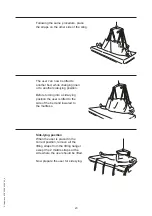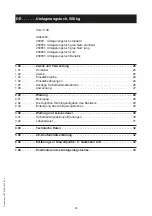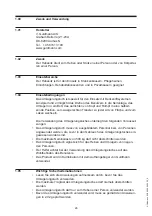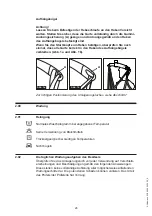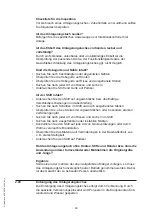
18
© G
ul
dm
an
n 03/2020 # 900680_8
© G
ul
dm
an
n 03/2020 # 900680_8
Sling inspection is done for the protection of the user, the caregiver, and the
overall hospital site safety. A sling inspection system has additional benefit.
Systematic sling inspection will assist in the identification of damage trends,
potentially leading to cost effective suggestions and results. The inspection
process can also help to identify inventory duplicity in certain sling types and
sizes.
Sling inspection system
Development of a specific procedure and program for the inspection of
slings at your facility is your best safeguard. Consider employing a three
part system of inspection. Slings that are removed from service and are not
capable of repair should be disposed of so they are unfit for any future use
and can not find a way back into active inventory.
1) Initial
This level of inspection is done at the time that the sling is received into your
facility. The inspector should ensure that no damage has occurred during
transit, and also verify that the sling work load limits match those contained in
the manufacturer’s catalogue. If your facility documents the sling inspection
process through written inspection records, the paper trail should begin at this
stage
2) Frequent
The frequent level of inspection should be done by the sling user before each
use. The sling should be examined and removed from service if damage is
detected. The sling user should also determine that the sling is proper for the
user conditions, care task required and the required weight capacity.
3) Periodic
Your facility might want to consider implementing a program for a periodic
level of inspection at regular intervals. The interval should be based upon
the frequency of use, severity of the service cycle and information derived
through the inspection process. Recommendations to prevent damage and
enhance service life could be made by staff that perform the periodic inspec
-
tions. If written inspection records are maintained, they should always refe-
rence the unique sling identification number, and be updated to record the
condition of the sling. Not intended to represent all potential inspection steps
or all potential aspects of product management program. Judgment of inspec-
tor/site prevails.
Sling inspection technique
The sling inspection procedure should be thorough, systematic and consi-
stent; both visual and “hands on” inspection techniques are recommended.
Certain forms of damage are far more discernable through hands-on inspec-
tion, than by visual inspection. For example, fabric stiffness, crushed webbing,
as well as, thinning fabric can be identified through tactile inspection. Visual
inspection alone may not reveal all forms of sling damage. Once signs of
damage have been identified, do not downgrade the work load limit of the sling,
with the intent of continuing to use it, but at limited capacity or frequency. This
is sometimes done to get more service life out of a damaged sling. The opera-
ting rule and standard should be: intact = use; damage = do not use.







